Lucio Fontana Follow Concetto spaziale, Attesa signed, titled and inscribed 'l.Fontana "Concetto spaziale ATTESA" oggi sono proprio stanco' on the reverse waterpaint on canvas 46 x 38 cm (18 1/8 x 14 7/8 in.) Executed in 1964.
Provenance Galleria Vismara, Milan Private Collection, Milan Private Collection, Milan Literature Enrico Crispolti, ed., Fontana, Catalogo generale , vol. II, Milan, 1986, no. 64 T 136, p. 541 (illustrated) Enrico Crispolti, ed., Lucio Fontana Catalogo ragionato di sculture, dipinti, ambientazioni , vol. II, Milan, 2006, no. 64 T 136, p. 727 (illustrated) Catalogue Essay Concetto spaziale, Attese and Concetto spaziale, Attesa , executed in 1963 and 1964 respectively, are each emblematic expressions of Fontana’s preoccupation with universal and spiritual concepts. While their primary colours are indexical of natural earthly elements such as light and water, the cuts crossing their surfaces indicate a symbolic transcendence of space and time. The magnetic blue in Concetto spaziale, Attesa provides a cool contrast to the following work’s brightness and luminosity; it invokes the endless depth of the sky as viewed from the Earth. The burst of yellow radiating from Concetto spaziale, Attese bears evident references to the the sun’s roaring rays for instance, yet also invokes a kind of spiritual luminescence superseding the quiet stillness of the monochrome. The five jet-black slashes piercing through the painting’s centre further reify a sense of boundless urgency; as a group, the cuts form a mystical presence interrupting the vibrant force of the yellow pigment. This uncanny conjunction of bright heliacal colour with pitch-dark carvings evokes the mystifying ambivalence of the Solar Eclipse: the fissures on the canvas indeed recall the moon’s passage over the sun, temporarily depriving the Earth of its light. The year of the work’s conception furthermore falls within a decade of major galactic breakthroughs: the first human voyage into space in 1961, and the moon landing eight years later, achieved shortly after Fontana’s death. Pure colour found in natural light figured among some of Fontana’s dearest delights; following his return to Italy in 1948, the artist requested that his brother take ‘thousands’ of photos of the Argentinian sky to remind him of the way aerial heights could merge with earthly visions. The present painting’s deep blue surface cut by a single thick slash captures the sky’s equivocal tones as its light progresses from solar to lunar. Fontana was moreover likely to have been guided by the colour blue’s rich historic significance and canonical evolution when producing Concetto spaziale, Attesa . The rich ultramarine tone, traditionally composed of pigments made from semiprecious – and exorbitantly expensive – lapis lazulis, was indeed heavily used during the Renaissance, as well as the 17th and 18th centuries. In those times, the metamorphic rocks were reserved for high quality commissions, synonymous with wealth and divinity. By 1963, a synthetic equivalent of the colour had been discovered and became reproducible using simple household paint –that which Fontana utilised to achieve his Tagli . The contrast between Fontana’s fascination with the natural world and the uniquely ‘manmade’ quality of his oeuvres can be considered the first in a series of distinct binaries dominating the artist’s practice. Sarah Whitfield wrote, ‘If Fontana thinks in terms of the monumental, he also thinks in polarities. The vastness of the universe is echoes in the microcosm of the hole; the mysteries of geological time are balanced by the still greater mysteries of outer space; and when he speaks about the duration of art he weighs a minute against a millennium’ ( Lucio Fontana , exh. cat., Hayward Gallery, London, 2000, p. 16). This dynamic of balanced contrasts is not only exemplified in the artist’s processes of production; it furthermore exists in small details and tweaks surrounding his finished works. The pure serenity of Concetto spaziale, Attese ’s façade, for instance, is at odds with the nonsensical inscriptions marked at the back of the canvas, reading ‘I like Luisella!’ and ‘Today I am tired’. These human exclamations
Lucio Fontana Follow Concetto spaziale, Attesa signed, titled and inscribed 'l.Fontana "Concetto spaziale ATTESA" oggi sono proprio stanco' on the reverse waterpaint on canvas 46 x 38 cm (18 1/8 x 14 7/8 in.) Executed in 1964.
Provenance Galleria Vismara, Milan Private Collection, Milan Private Collection, Milan Literature Enrico Crispolti, ed., Fontana, Catalogo generale , vol. II, Milan, 1986, no. 64 T 136, p. 541 (illustrated) Enrico Crispolti, ed., Lucio Fontana Catalogo ragionato di sculture, dipinti, ambientazioni , vol. II, Milan, 2006, no. 64 T 136, p. 727 (illustrated) Catalogue Essay Concetto spaziale, Attese and Concetto spaziale, Attesa , executed in 1963 and 1964 respectively, are each emblematic expressions of Fontana’s preoccupation with universal and spiritual concepts. While their primary colours are indexical of natural earthly elements such as light and water, the cuts crossing their surfaces indicate a symbolic transcendence of space and time. The magnetic blue in Concetto spaziale, Attesa provides a cool contrast to the following work’s brightness and luminosity; it invokes the endless depth of the sky as viewed from the Earth. The burst of yellow radiating from Concetto spaziale, Attese bears evident references to the the sun’s roaring rays for instance, yet also invokes a kind of spiritual luminescence superseding the quiet stillness of the monochrome. The five jet-black slashes piercing through the painting’s centre further reify a sense of boundless urgency; as a group, the cuts form a mystical presence interrupting the vibrant force of the yellow pigment. This uncanny conjunction of bright heliacal colour with pitch-dark carvings evokes the mystifying ambivalence of the Solar Eclipse: the fissures on the canvas indeed recall the moon’s passage over the sun, temporarily depriving the Earth of its light. The year of the work’s conception furthermore falls within a decade of major galactic breakthroughs: the first human voyage into space in 1961, and the moon landing eight years later, achieved shortly after Fontana’s death. Pure colour found in natural light figured among some of Fontana’s dearest delights; following his return to Italy in 1948, the artist requested that his brother take ‘thousands’ of photos of the Argentinian sky to remind him of the way aerial heights could merge with earthly visions. The present painting’s deep blue surface cut by a single thick slash captures the sky’s equivocal tones as its light progresses from solar to lunar. Fontana was moreover likely to have been guided by the colour blue’s rich historic significance and canonical evolution when producing Concetto spaziale, Attesa . The rich ultramarine tone, traditionally composed of pigments made from semiprecious – and exorbitantly expensive – lapis lazulis, was indeed heavily used during the Renaissance, as well as the 17th and 18th centuries. In those times, the metamorphic rocks were reserved for high quality commissions, synonymous with wealth and divinity. By 1963, a synthetic equivalent of the colour had been discovered and became reproducible using simple household paint –that which Fontana utilised to achieve his Tagli . The contrast between Fontana’s fascination with the natural world and the uniquely ‘manmade’ quality of his oeuvres can be considered the first in a series of distinct binaries dominating the artist’s practice. Sarah Whitfield wrote, ‘If Fontana thinks in terms of the monumental, he also thinks in polarities. The vastness of the universe is echoes in the microcosm of the hole; the mysteries of geological time are balanced by the still greater mysteries of outer space; and when he speaks about the duration of art he weighs a minute against a millennium’ ( Lucio Fontana , exh. cat., Hayward Gallery, London, 2000, p. 16). This dynamic of balanced contrasts is not only exemplified in the artist’s processes of production; it furthermore exists in small details and tweaks surrounding his finished works. The pure serenity of Concetto spaziale, Attese ’s façade, for instance, is at odds with the nonsensical inscriptions marked at the back of the canvas, reading ‘I like Luisella!’ and ‘Today I am tired’. These human exclamations
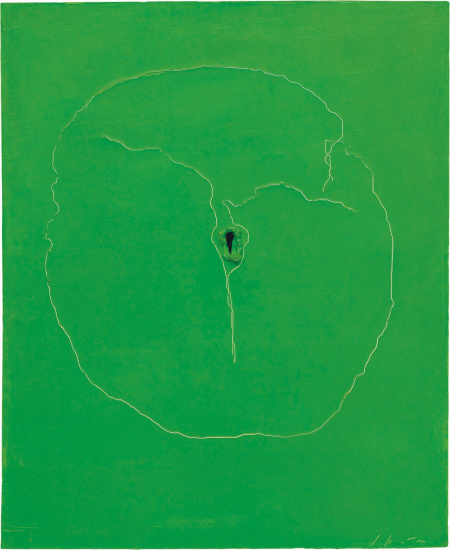
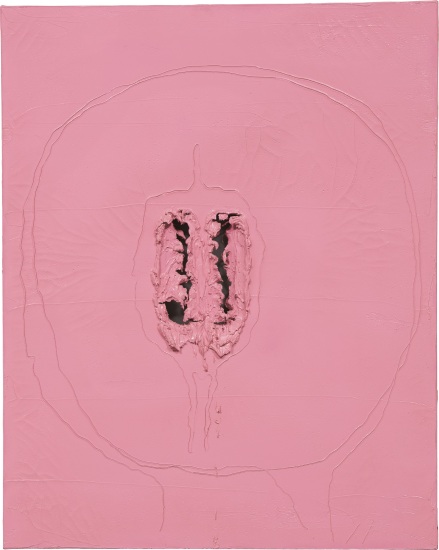
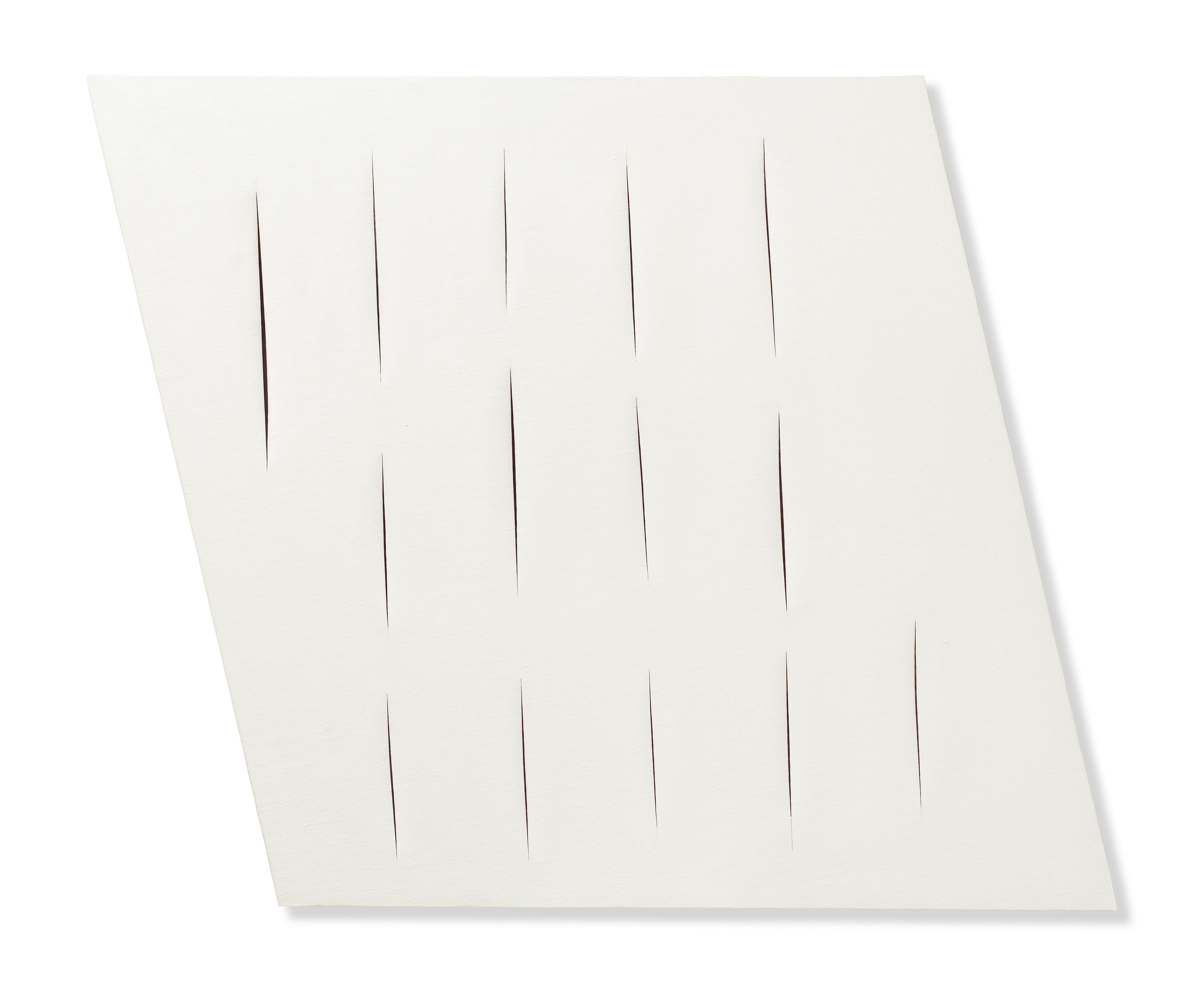
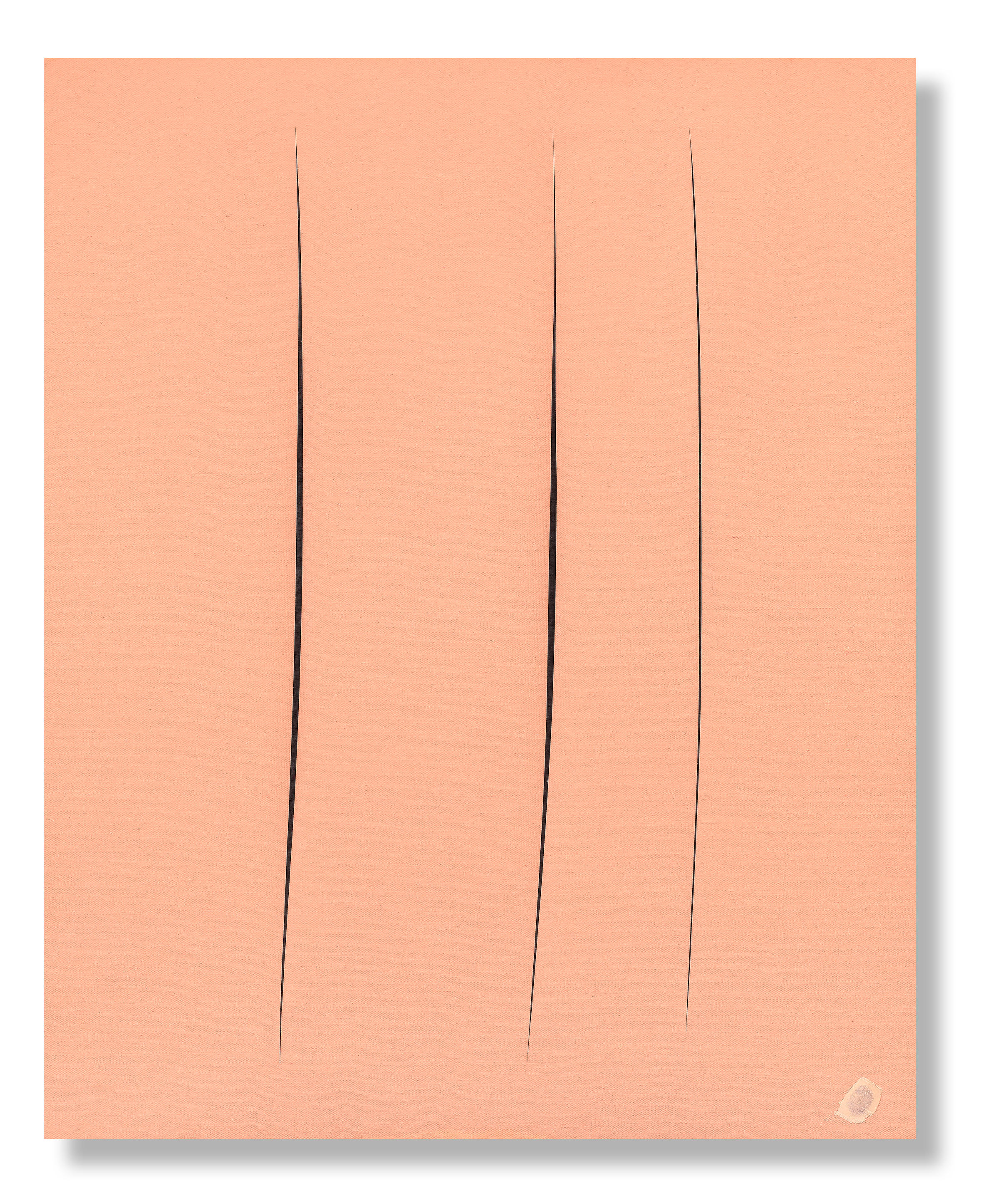
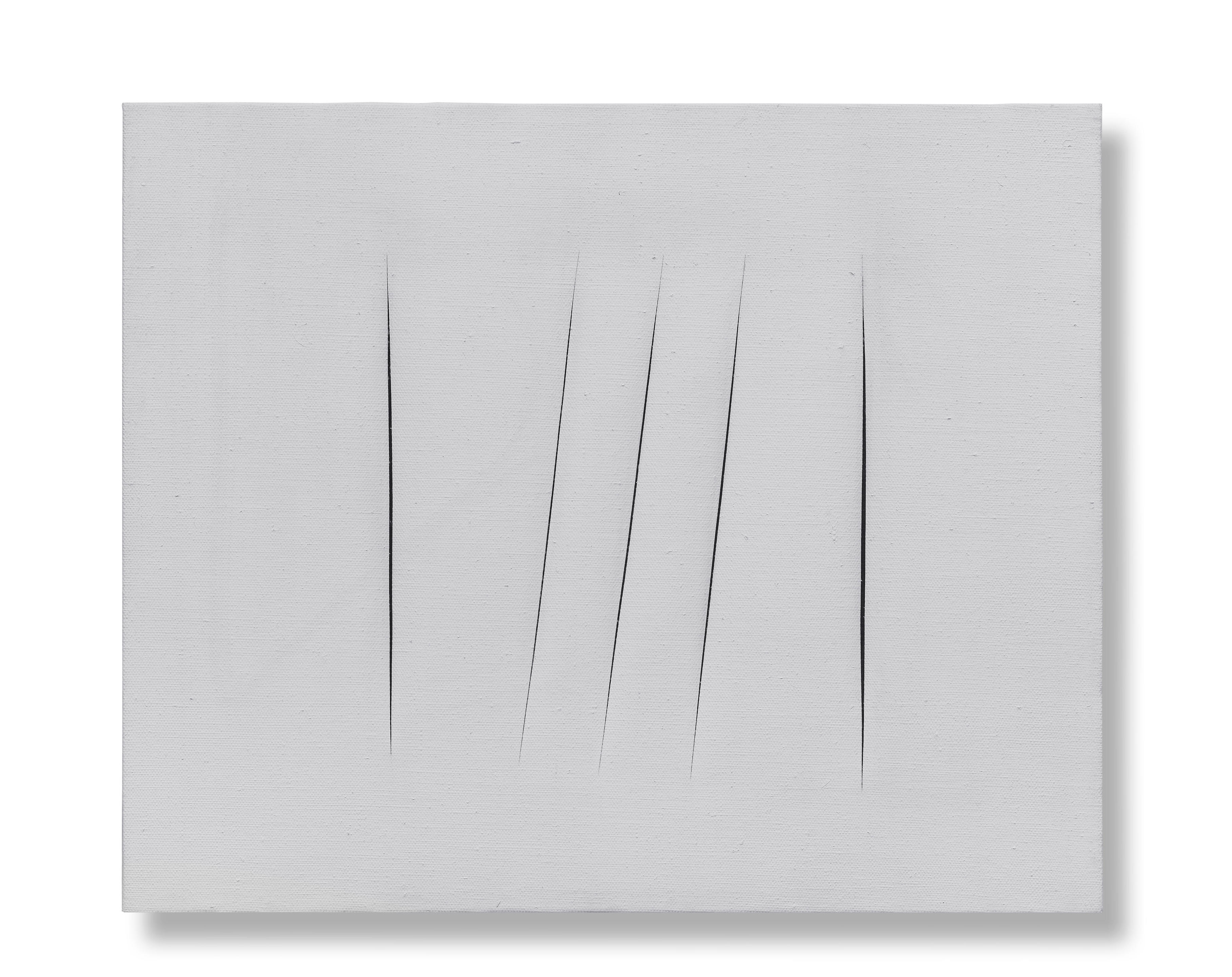



.jpg)
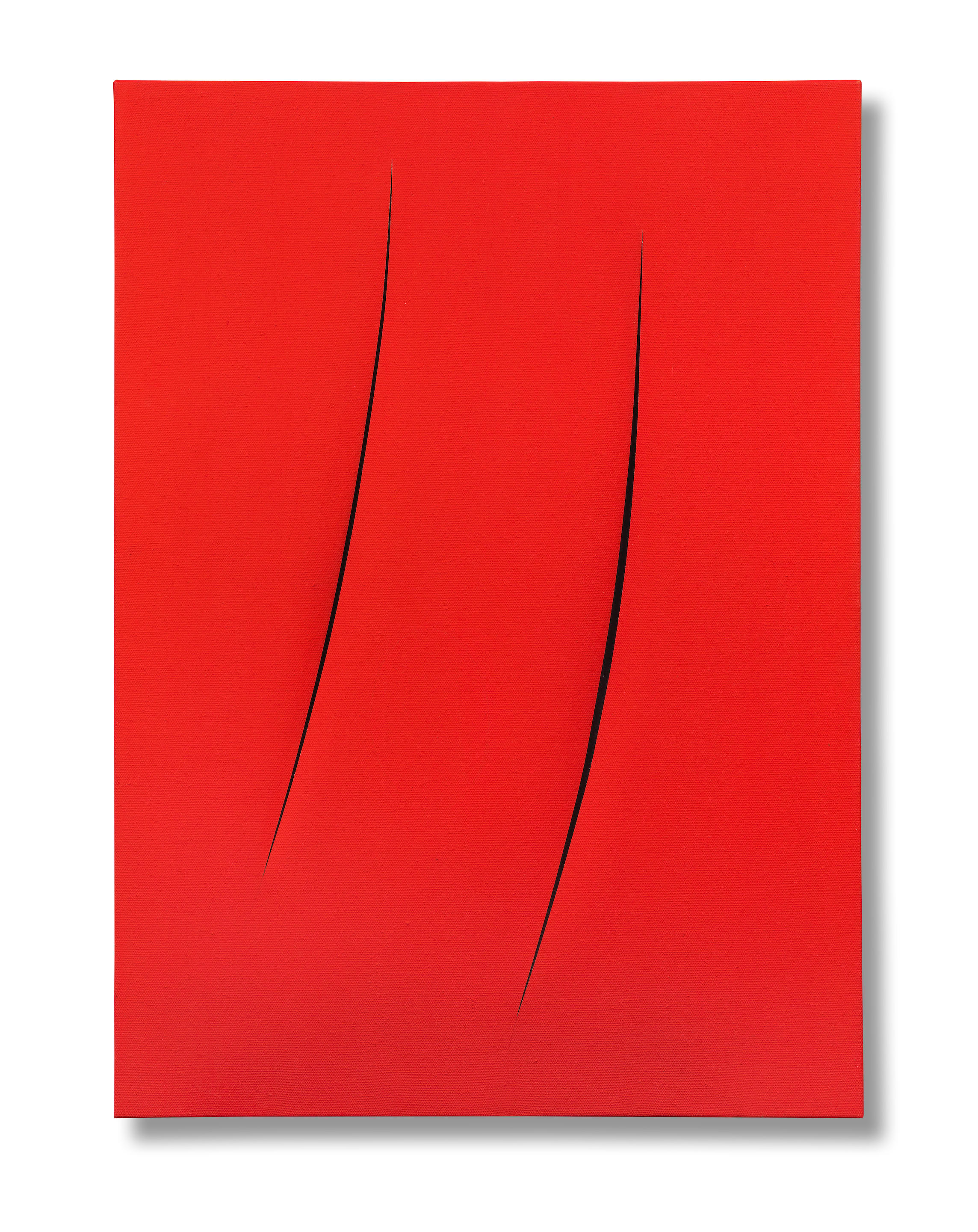
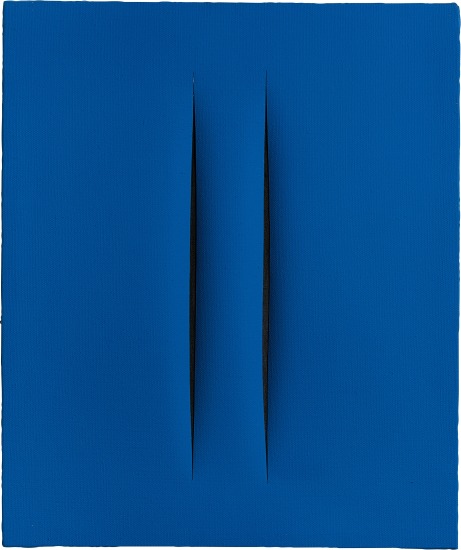
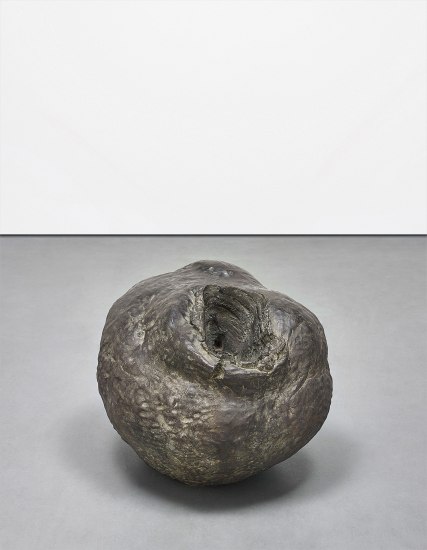

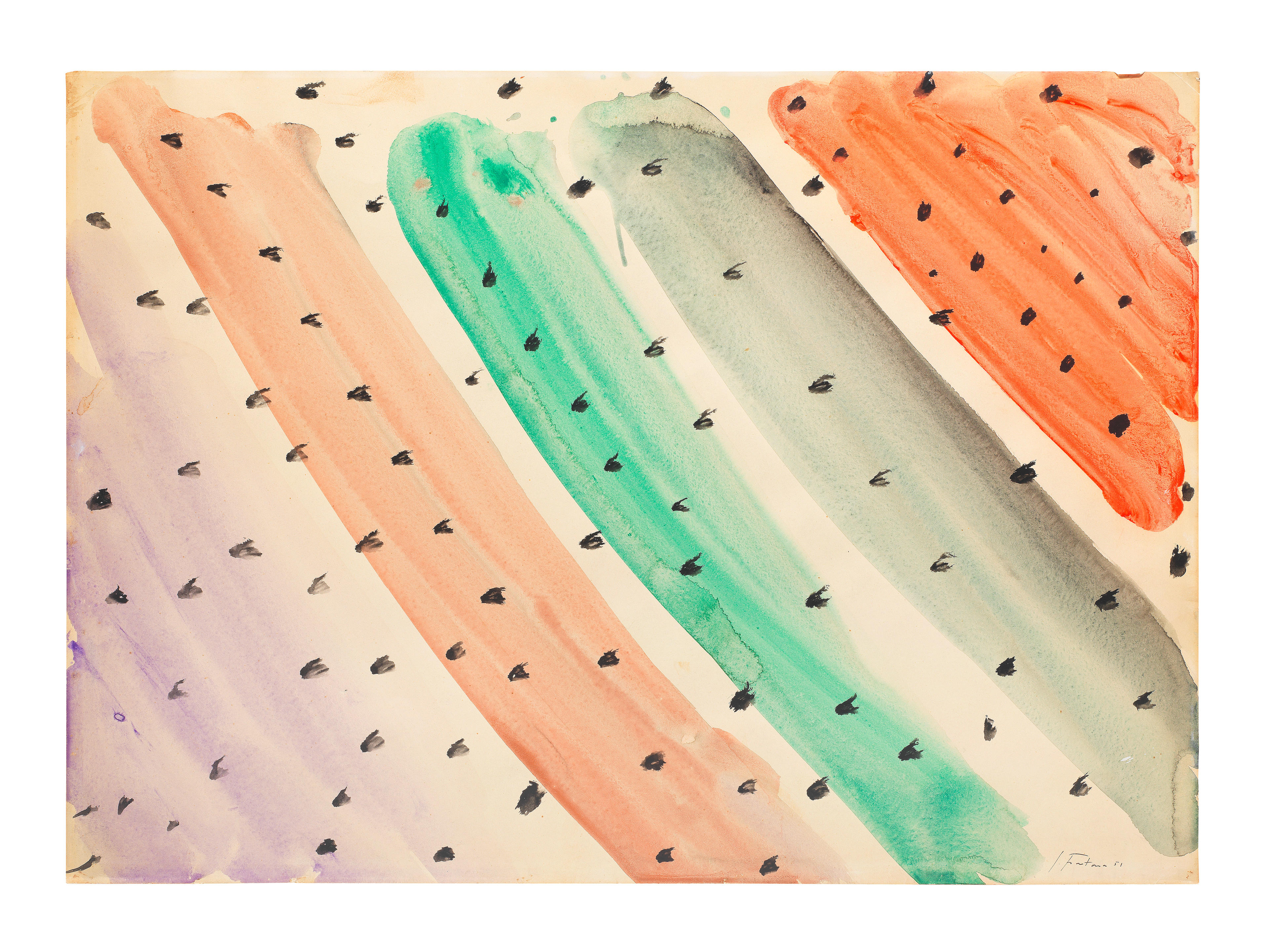
Try LotSearch and its premium features for 7 days - without any costs!
Be notified automatically about new items in upcoming auctions.
Create an alert